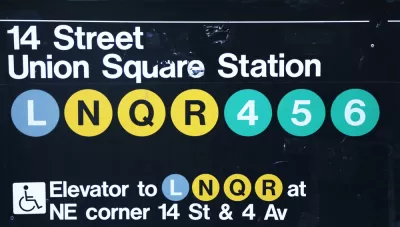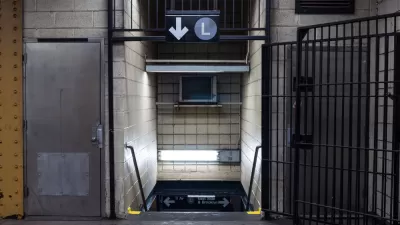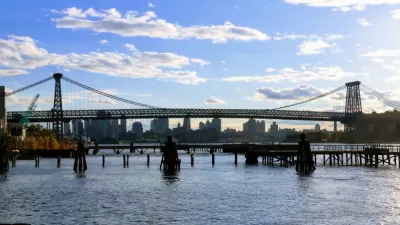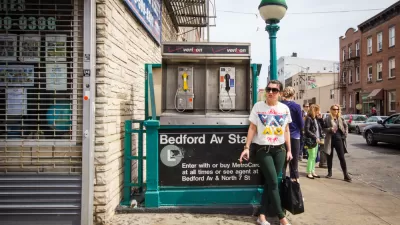After the initial shock of Governor Andrew Cuomo's cancellation of the planned L Train closure subsided, analysis and commentary rolled in.

Governor Andrew Cuomo and a special panel of experts from Columbia and Cornell universities dropped a bombshell announcement last week by scuttling plans to close the L Train between Brooklyn and Manhattan for repairs to damages incurred during Hurricane Sandy.
The closure was planned for years, so the surreal qualities of the announcement to call off the closure just months before the expected start date quickly gave way to the need for more information about just how Gov. Cuomo thinks the subway route could be kept open during repairs.
According to an article by Dan Rivoli, Jillian Jorgensen, and Larry Mcshane, the key to the new plan is enabled by new construction techniques not-yet attempted in this country:
MTA officials under then-honcho Tom Prendergast had stressed in 2016 that tunnel bench walls containing sensitive cables must be demolished and replaced to keep the Canarsie tube intact.
That is apparently now unnecessary with a new repair technique never before tested on a subway tunnel rehab project in the country.
The cables in the bench walls will be abandoned for a new power and subway control system, in which the wires will be raised on the side of the tunnel to avoid damage from future floods, officials said.
Cracked or deteriorated parts of the bench wall will be strengthened by wrapping them in a fiber-reinforced polymer, engineering experts said. Sensors will monitor any problems.
In essence, the construction work has been scaled back, and will no longer require a full reconstruction, according to the article.
There was also plenty of commentary to read, focusing more on the political and public relations fall out of the move by Gov. Cuomo to cancel the closure at such a late point in the process.
Henry Grabar writes what a lot of people were thinking and saying on social media before, during, and after the announcement:
The governor has overturned years of public work for a solution so simple it was concocted in three weeks by an unpaid team of university professors. If it works, it’s a scandal that the MTA—whose mismanagement of megaprojects is legendary—never proposed it in the first place. If it doesn’t, it will go down as the ultimate symbol of the governor’s rash micromanagement of public works projects and his desire to seek “innovation” above tried-and-true methods.
According to Grabar, "it's impossible to exaggerate how profound an about-face this is."
Raising similar issues is Dave Colon, who describes the reaction of transit advocates and experts in the wake of the announcement as "grasping for answers in the dark, as if in some sort of tunnel."
Included in Colon's article are soundbites from Jon Orcutt, director of communications and advocacy for TransitCenter, who supports the new plan but raises questions about the process of cancelling the plan. Former City Council Speaker Melissa Mark-Viverito, Jaqi Cohen of the Straphangers Campaign, and John Raskin, the executive director of the Riders Alliance are more skeptical.
FULL STORY: Cuomo announces L train service will not shut down thanks to new type of tunnel design suggested by experts

Alabama: Trump Terminates Settlements for Black Communities Harmed By Raw Sewage
Trump deemed the landmark civil rights agreement “illegal DEI and environmental justice policy.”

Study: Maui’s Plan to Convert Vacation Rentals to Long-Term Housing Could Cause Nearly $1 Billion Economic Loss
The plan would reduce visitor accommodation by 25% resulting in 1,900 jobs lost.

Planetizen Federal Action Tracker
A weekly monitor of how Trump’s orders and actions are impacting planners and planning in America.

Restoring Northern India’s Himalayan ‘Water Temples’
Thousands of centuries-old buildings protect the region’s natural springs and serve as community wells and gathering places.

Milwaukee to Double Bike Share Stations
Bublr Bikes, one of the nation’s most successful, will add 500 new e-bikes to its system.

DC Extends Application Window for Outdoor Dining Permits
District restaurants will have until the end of November to apply, but businesses with permits in rush hour parking lanes must end operations on July 31.
Urban Design for Planners 1: Software Tools
This six-course series explores essential urban design concepts using open source software and equips planners with the tools they need to participate fully in the urban design process.
Planning for Universal Design
Learn the tools for implementing Universal Design in planning regulations.
Caltrans
Smith Gee Studio
Institute for Housing and Urban Development Studies (IHS)
City of Grandview
Harvard GSD Executive Education
Toledo-Lucas County Plan Commissions
Salt Lake City
NYU Wagner Graduate School of Public Service





























